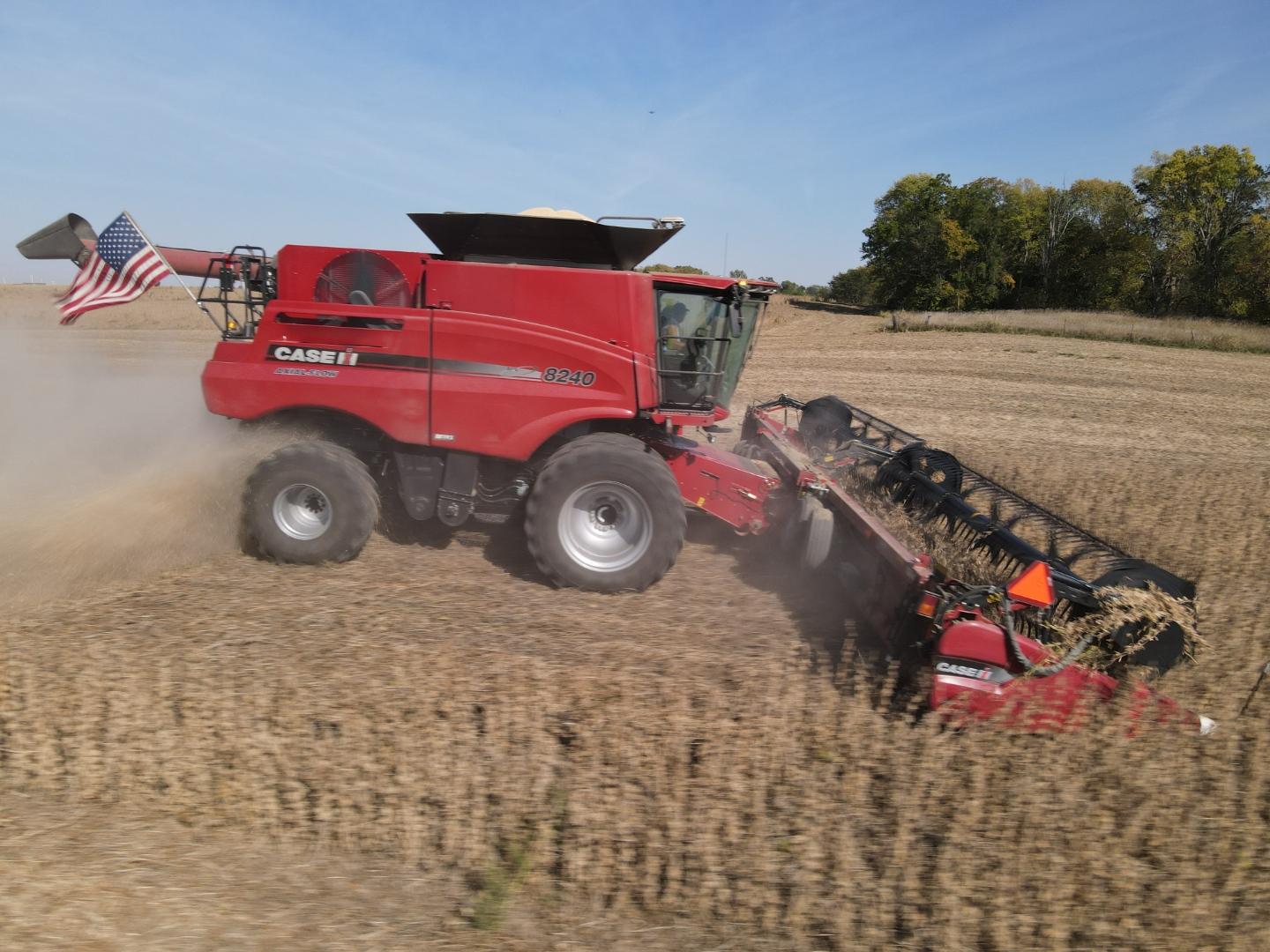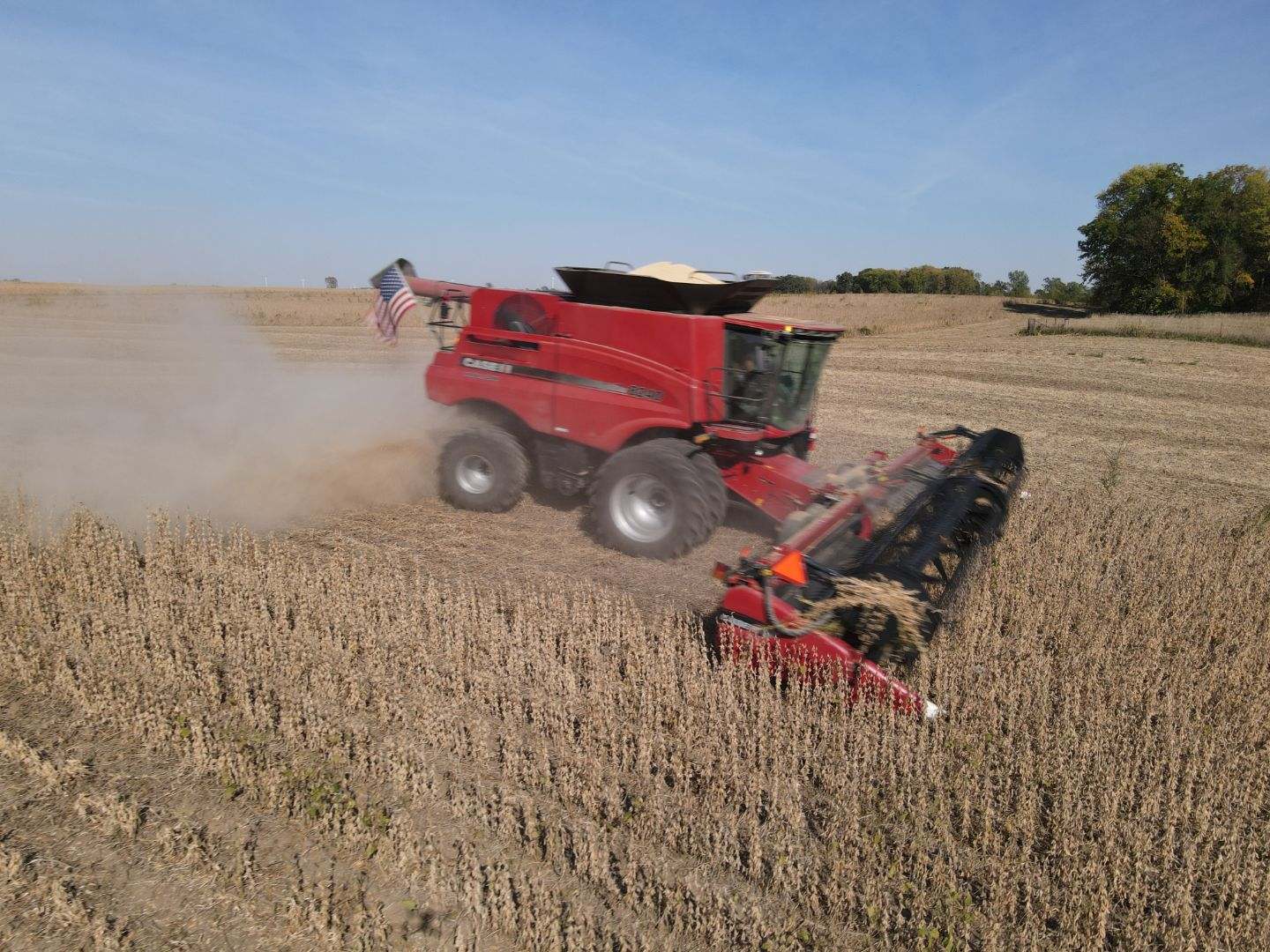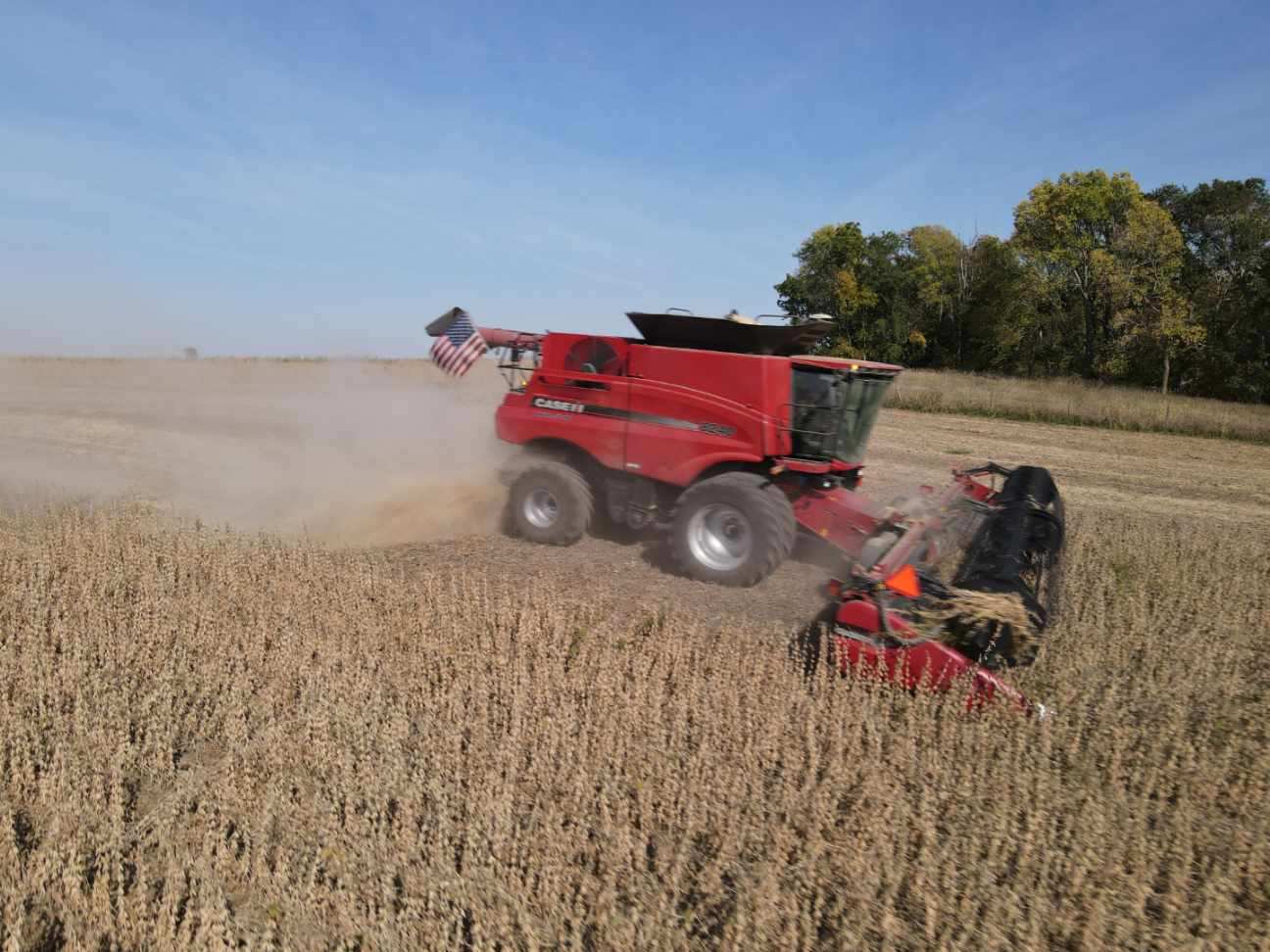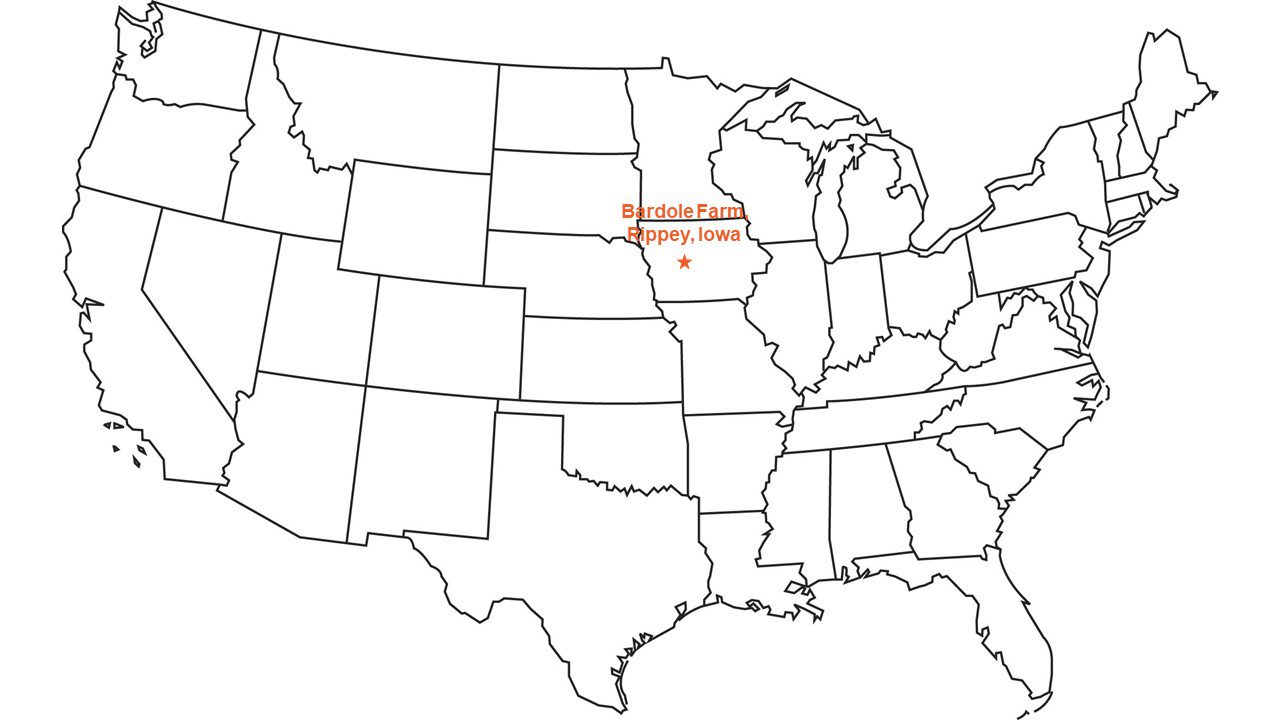 This season was dry and challenging in our area of the U.S. Midwest. But now that we are harvesting, we are seeing that both our soybeans and corn handled the growing conditions much better than we expected.
This season was dry and challenging in our area of the U.S. Midwest. But now that we are harvesting, we are seeing that both our soybeans and corn handled the growing conditions much better than we expected.
Our crops were ready to harvest a bit sooner we anticipated, so we got started in late September, as soon as the soybeans were ready. We are focusing on cutting our soybeans, because the dry crop is more fragile and susceptible to losing yield due to a weather event like hail or heavy winds. At this stage, the corn handles that type of stress much better, and dropped corn ears are easier to pick up than fallen soybeans or soybean pods.
Cutting soybeans will likely take about three weeks. Harvesting corn usually takes more than a month. We picked one field of corn when we first started, and it yielded much better than we expected, well above our average. We hope that trend continues.
 So far, our soybean yields have been above average, which is amazing considering the weather conditions. Even the fields where we destroyed corn last season because of the derecho, the major windstorm that hit us last year, are yielding well, in part because we successfully managed volunteer corn throughout the season. I asked area agronomists why they think we are getting such good yields, but they really aren’t sure. We are thankful for the unexpected yields.
So far, our soybean yields have been above average, which is amazing considering the weather conditions. Even the fields where we destroyed corn last season because of the derecho, the major windstorm that hit us last year, are yielding well, in part because we successfully managed volunteer corn throughout the season. I asked area agronomists why they think we are getting such good yields, but they really aren’t sure. We are thankful for the unexpected yields.
Harvest keeps us all busy. My son Schyler usually runs the combine, while my dad Roy drives the tractor and auger cart that delivers the soybeans from the combine in the middle of the field to the semitrucks my brother Pete and I drive at the edge of the field. Both Pete and I have commercial drivers licenses that allow us to drive these semitrucks from the field either to our on-farm storage or to local grain elevators.
We watch crop prices closely to decide if we want to store the soybeans on our farm for a while or if we want to sell them immediately. Prices are hard to predict in the fall, and we rarely figure out when to sell to get the best price. However, we do make sure we sell when prices ensure a profit. Successfully doing that requires careful thought and calculation, because we have to account for increases in input prices for the following year. Higher fertilizer prices already appear to be a major issue for next season.
 Before harvest started, we planted more than 2,000 hectares, or about 5,000 acres, of cover crops in our fields and for other farmers in the area. It has been a good fall for cover crops. The first half of what we planted has emerged nicely and looks good. The rest of the cover crops will emerge after the next rain.
Before harvest started, we planted more than 2,000 hectares, or about 5,000 acres, of cover crops in our fields and for other farmers in the area. It has been a good fall for cover crops. The first half of what we planted has emerged nicely and looks good. The rest of the cover crops will emerge after the next rain.
At the end of September, a new group of young pigs weighing about 18 kg, or 40 pounds filled our barns. They require a bit of extra attention and care as they get settled into their new home, so caring for them and harvesting means we have lots of work to do.
The 2021 crop has been a good surprise so far. And it has been much better than last year, when we had very little to harvest because of the derecho. While we harvest it, we are monitoring prices and our storage capacity to help us make marketing decisions.
This field update is funded by the soybean checkoff. To share or republish part or all of this Ground Work 2021 article, please link to the original article and credit www.USSOY.org.

